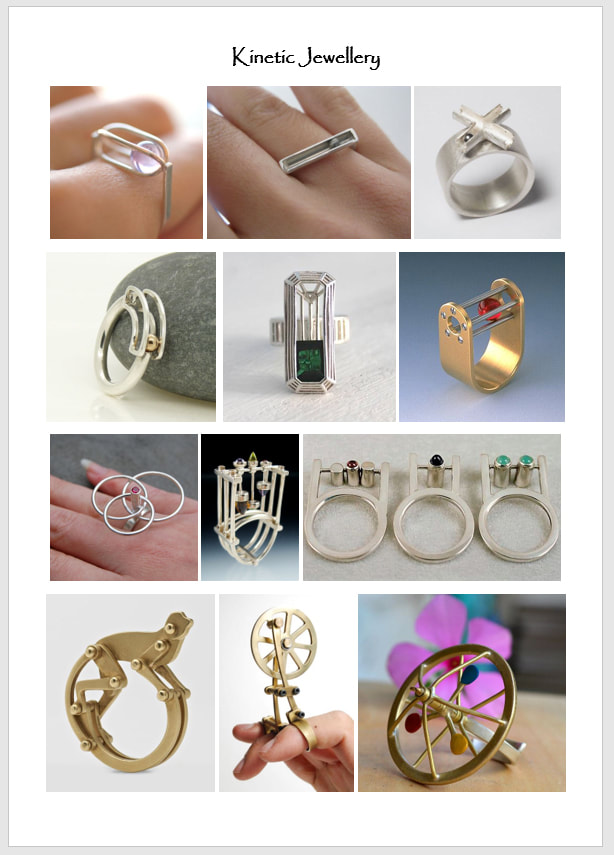Fine Jewellery Techniques (JEW4035)
02/02/2018 Initial Ideas
Project Brief:
"You are going to design and make a decorative, kinetic ring or brooch that fits into the dimensions of 40mm x 40mm x 40mm. The piece must contain an element that moves. You will complete six session prior to making your ring or brooch, these six sessions will teach you all of the techniques you need to create this piece. The work produced in these six sessions needs to be handed in alongside the final kinetic outcome."
The final piece must use at last two of the techniques we'll cover in class, and hand in is going to be in an A4 box file (so no spectacular display - which is a shame).
If you google 'kinetic jewellery' there is the most amazing stuff out there. Of particular note is Victoria Walker, who specialises in lockets formed from unfurling flowers.
I also remembered Naomi Kizhner's conceptual designs for "invasive" "parasitic" jewellery that would convert energy from the body into electricity. It's not for the squeamish.
"You are going to design and make a decorative, kinetic ring or brooch that fits into the dimensions of 40mm x 40mm x 40mm. The piece must contain an element that moves. You will complete six session prior to making your ring or brooch, these six sessions will teach you all of the techniques you need to create this piece. The work produced in these six sessions needs to be handed in alongside the final kinetic outcome."
The final piece must use at last two of the techniques we'll cover in class, and hand in is going to be in an A4 box file (so no spectacular display - which is a shame).
If you google 'kinetic jewellery' there is the most amazing stuff out there. Of particular note is Victoria Walker, who specialises in lockets formed from unfurling flowers.
I also remembered Naomi Kizhner's conceptual designs for "invasive" "parasitic" jewellery that would convert energy from the body into electricity. It's not for the squeamish.
|
I first starting thinking along the lines of automata/puppets. I vaguely remembered a piece I’d seen on Facebook ages ago, it was a flower that bobbed up and down when a handle was turned. I couldn’t find it again but I was sure it involved a fairly simple mechanism of bent wire.
During my internet wanderings, I discovered the MAD Museum in Stratford, and decided a field trip was needed (partly to research the mechanical methods used in automata, and partly because I knew they'd have some fun DIY kits in their shop). Other ideas I'm pondering include:
|





